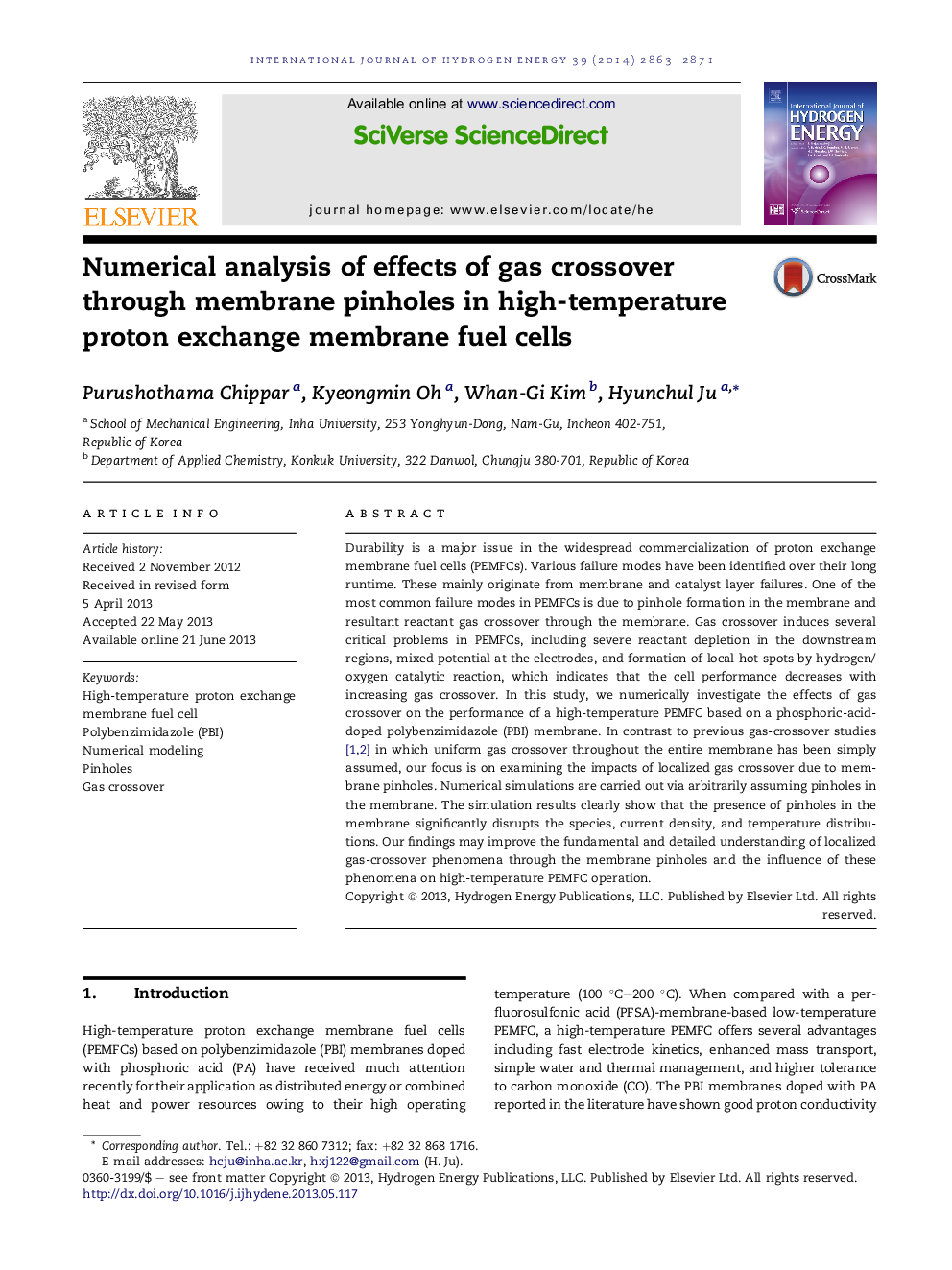| Article ID | Journal | Published Year | Pages | File Type |
|---|---|---|---|---|
| 7720634 | International Journal of Hydrogen Energy | 2014 | 9 Pages |
Abstract
Durability is a major issue in the widespread commercialization of proton exchange membrane fuel cells (PEMFCs). Various failure modes have been identified over their long runtime. These mainly originate from membrane and catalyst layer failures. One of the most common failure modes in PEMFCs is due to pinhole formation in the membrane and resultant reactant gas crossover through the membrane. Gas crossover induces several critical problems in PEMFCs, including severe reactant depletion in the downstream regions, mixed potential at the electrodes, and formation of local hot spots by hydrogen/oxygen catalytic reaction, which indicates that the cell performance decreases with increasing gas crossover. In this study, we numerically investigate the effects of gas crossover on the performance of a high-temperature PEMFC based on a phosphoric-acid-doped polybenzimidazole (PBI) membrane. In contrast to previous gas-crossover studies [1], [2] in which uniform gas crossover throughout the entire membrane has been simply assumed, our focus is on examining the impacts of localized gas crossover due to membrane pinholes. Numerical simulations are carried out via arbitrarily assuming pinholes in the membrane. The simulation results clearly show that the presence of pinholes in the membrane significantly disrupts the species, current density, and temperature distributions. Our findings may improve the fundamental and detailed understanding of localized gas-crossover phenomena through the membrane pinholes and the influence of these phenomena on high-temperature PEMFC operation.
Keywords
Related Topics
Physical Sciences and Engineering
Chemistry
Electrochemistry
Authors
Purushothama Chippar, Kyeongmin Oh, Whan-Gi Kim, Hyunchul Ju,
